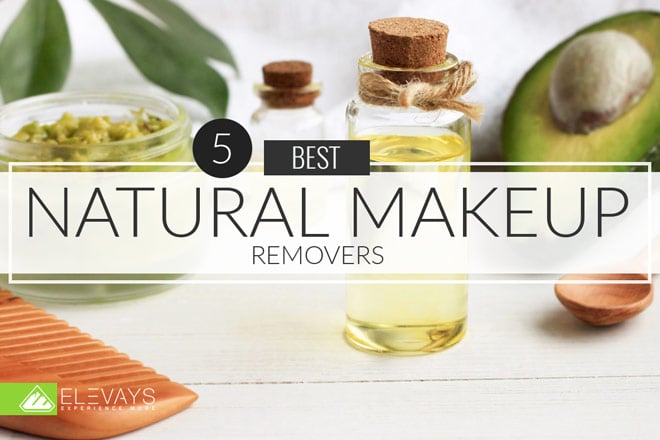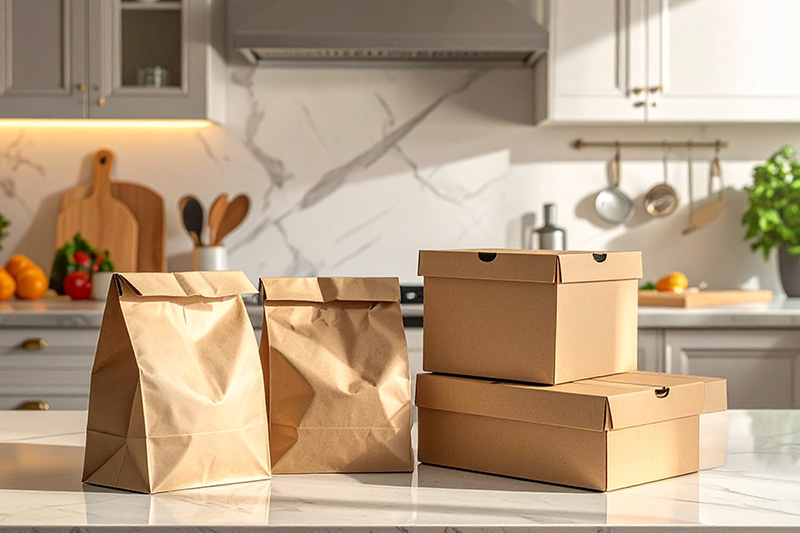You know that moment after you’ve managed to put the kids to bed without fuss and you’re lying in bed, pajamas on and makeup off? That might very well be the best feeling in the world.
We all know the struggle of waking up next to a makeup stain and being more upset that you didn’t let your skin breath than that you ruined your beautiful white pillow case. Removing your makeup is arguably the most important part of your nightly routine. Forget about finally finding out who the murderer is in that last chapter of your mystery novel, cleansing your face of all the makeup and environmental toxins from the day is the undisputed champion.
So, if your makeup remover is the most important tool in your nightly routine then it deserves some extra consideration. In this article, I’m going to convince you to make the switch to natural makeup removers and ditch the conventional removers. Read on to discover the best makeup remover that you never knew was makeup a remover. More effective, easier on your wallet, amazing for your skin- and probably already in your pantry.
TRUTH BOMB:
You’re
Already killing it!
If You Were More Consistent With Your Wellness Routine, You’d Be Unstoppable.
THE BAD GUYS
It’s no news that there are toxins lurking in your everyday personal care products – and makeup remover is not an exception. These troublemakers rob our skin of its rightful beauty sleep. They strip it of its natural barrier, allowing problematic chemicals to seep through- creating all sorts of imbalances.
The truth is, most mainstream makeup removers are water-based which means they are vulnerable to bacteria—making them a bad idea for acne prone skin and cleansing in general. So, while we may think we’re cleansing our skin of impurities, we are really setting it up for disaster.
Conventional makeup remover is full of unfriendly ingredients. Below is a list of some of the harmful ingredients hiding in your makeup remover.
Parabens
Commonly used removers depend heavily on parabens as a way of chemical preservation. The problem with parabens is that they disrupt hormone function. Because parabens mimic estrogen- they mess with your hormonal balance- which affect not only the appearance of your skin but also the function of your body (1).
Parabens cause endocrine disruption that can lead to reproductive and developmental toxicity, cancer, autoimmune and other illnesses and are especially dangerous to pregnant women and children (1).
Commonly used parabens in personal care products to look out for:
- Ethylparaben
- Butylparaben
- Isobutyparaben
- Isopropylparaben
- Methylparaben
- Propylparaben
Benzalkonium Chloride
Benzalkonium Chloride is a known human toxicant and allergen found in mainstream makeup remover (common household disinfectants as well…do you really want to be using the same ingredient you clean your sinks and floors with to clean your face? You shouldn’t be using it to clean your kitchen either- but that’s for another time). I’m about to hit you with some hard evidence that a lot of safety regulating folks find incriminating:
The Association of Occupational and Environmental Clinics found strong evidence for Benzalkonium Chloride as a human immune and respiratory toxicant/allergen. The Cosmetic Ingredient Review Assessments also found it to be an allergen as well as a skin toxicant. The Environmental Working Group notes that regular use of makeup remover containing antimicrobials such as Benzalkonium Chloride can lead to the development of bacteria resistance. Use of Benzalkonium Chloride in products is restricted in Canada and Japan (2).
If you know what’s good for you- be like the Canadians and Japanese and ditch makeup remover containing Benzalkonium Chloride.
Disodium EDTA
Disodium EDTA is widely used by cosmetic manufacturers and a ring leader when it comes to skin crimes. While this penetration enhancer isn’t easily absorbed by the skin—it has been shown to enhance the penetration of other problematic chemicals (3). When combined with other chemicals found in your makeup remover those ingredients will be more easily absorbed by your dermal layer causing a heap load of problems (3).
Disodium EDTA also binds to metals necessary for healthy cell division making this ingredient slightly mutagenic (4). By disrupting the surface of skin cells, bad stuff found in even the water you are rinsing your face with after your makeup remover will penetrate your dermal layer (4). It is also said that Disodium EDTA oddly blocks vitamin C absorption, which is a must have vitamin for beautiful skin (5).
PEGs
PEGs (Polyethylene Glycol) are carcinogenic petroleum based compounds found in your conventional makeup remover that reduces natural skin moisture, increases signs of aging and leaves your skin vulnerable to bacteria (3). Like Disodium EDTA, PEGs also have penetration enhancing effects when used on a compromised barrier (3). Also found in cleaning products that help to dissolve oil, PEGS found in your personal care products will work the same and alter your natural moisture balance (3).
PEGs are heavily contaminated with Ethylene Oxide which scores a 10 on a 1-10 scale of hazardous chemicals (4,6). The US FDA warns that Ethylene Oxide can have adverse effects on the nervous system (4,6) while the Cosmetic Industry Panel concluded that PEG compounds are not safe for compromised skin (6). Japan has a concentration limit for the use of PEGs in cosmetics while the European Union identifies it as an irritant to avoid getting in and around your lips (4) – what are you going to use to take your lipstick off now? Read on to find out.
NATURAL MAKEUP REMOVER FOR A REAL BEAUTY SLEEP
Now that we have the nasty stuff out of the way- let’s get you makeup free with some of the best natural makeup remover options. Natural makeup removers will easily take off your makeup AND leave your skin basking in some of the most powerful beauty vitamins and nutrients.
Natural oils work brilliantly to moisturize, rejuvenate, and rehydrate cells. Remember in science class when your teacher told you “like dissolves like”- well, it finally makes sense! Oil dissolves oil. We know that conventional makeup remover strips the skin of its natural oil barrier causing oily skin to get oilier (cue breakouts) and dry skin to get drier (hello irritation)- natural oils do the opposite! Get ready to ditch chemical laden removers for these easy and effective natural makeup removing masters.
OLIVE OIL
KITCHEN TURNED BATHROOM STAPLE
Olive oil will allow mascara to slide off your lashes- even the toughest, waterproof kind- but that’s not all it’s good for. The oil of the olive is known for its skin lovin’ vitamins E and A. Vitamin A is crucial for cell repair and renewal, keeping your skin glowing and smooth. It also regulates the activity of sebaceous glands which control oil secretion, necessary for balanced moisture. Vitamin E is key for maintaining moisture and fighting oxidative stress that causes deterioration of your collagen layer.
This kitchen staple turned bathroom staple is packed with healthy fats and antioxidants that hinder damaging free radicals that cause aging. Talk about setting yourself up for the most beautiful beauty sleep.
Bonus: can help with eyelash growth so keep a big bottle of organic olive oil sink side for an easy natural eye makeup remover and lash stimulator.
Use: Pour small amount onto palm and rub into fingers, gently rub on eyelashes and around eyes, wipe clean with cotton pad or cloth, massage excess oil onto face and rinse with water. Follow with cleanser.
JOJOBA OIL
FREE RADICAL NINJA
Hypoallergenic Jojoba oil, when purchased 100% free of chemicals and additives, is one of the most loved makeup removers! Perfect for soothing chapped skin- this natural makeup remover is high in iodine allowing it to remove dirt and harmful bacteria that lead to breakouts. Free radicals cause breakdown of collagen. We don’t want that, because collagen slows the aging process.
But don’t worry because jojoba oil is rich in antioxidants, that help smooth fine lines and wrinkles while stimulating collagen synthesis! Jojoba oil is most similar in composition to the sebum that our skin naturally produces. This means that it won’t clog pores and helps to regulate skin that’s too oily or too dry. Safe for the eye area, jojoba oil should be a go-to option for eye makeup removal.
Use: Pour small amount onto palm, rub into hands, and gently massage on face and around eye area. Option to use cloth or pad. Follow up with warm water and cleanser.
COCONUT OIL
AN ISLAND LOVER’S SKIN CARE DELIGHT
Keep your skin hydrated all night with this island-y natural makeup remover. Coconut oil is a powerful lubricant, making it perfect for makeup removal and cleansing. It’s also rich in lauric acid which has antimicrobial properties that help fight acne. But make sure to follow with a good cleanser after use because for some it may be comedogenic which means it could clog pores.
Use: Rub small amount onto fingers to warm if solid and massage on face and eye area
Option to use cotton pad or cloth.
SWEET ALMOND OIL
SMOOTH & SWEET AND ULTRA RICH IN VITAMIN E
Unlike coconut oil, sweet almond oil is non-comedogenic and is unlikely to clog pores. Ideal for all skin types, it’s amazing for helping your skin look smooth, soft and wrinkle-free– just like you were in high school. Sweet almond oil penetrates easily so say goodbye to dirt and oil that accumulate on your skin throughout the day. Almond oil is rich in Vitamin E and A which are like superfoods for the skin (7). Vitamin E is also a potent antioxidant and can protect you skin from free radical damage (this is what causes aging!). This is an oil that I particularly love for facial skin and body.
Use: Massage small amount on face and eye area with fingers. Option to use cotton pad or cloth.
WITCH HAZEL
BACTERIA BUSTING SUPER POTION
As a natural astringent, gentle Witch Hazel is a great addition to a homemade makeup remover because it helps clear skin of bad bacteria that can get caught up in your makeup throughout the day. Used throughout history in traditional medicine to treat many skin conditions, this magic potion will fight any unwanted skin problem. Witch Hazel also works as a powerful antioxidant by preventing cellular damage making it ideal for your nightly routine.
Use: Combine 2 tablespoons of any oil with 3 tablespoons of this natural astringent for a DIY makeup remover. Be careful around eye area.
Upgrade with Essential Oils
I love adding essential oils to my beauty routine any chance I get. This includes when it’s time to remove makeup. Try adding one or more of these beauty boosting essential oils for enhanced results and gorgeous, radiant skin:
1- Melaleuca (aka Tea Tree Oil)
Add a drop of this to your oily makeup remover to fight the bacteria that cause acne. If you’re sick of dealing with breakouts, this is definitely an oil to have on hand. Massage into the skin but avoid the eye area. When it’s time to take off your eye makeup just use plain oil and not essential oil to prevent any irritation.
2- Frankincense
Known as the “king of oils” Frankincense kicks serious butt when it comes to anti-aging. Working on the cellular level to heal and regenerate damaged skin, add a drop of this to your oily remover to promote age-less skin. (Another secret? Add another drop to your moisturizer or night cream to fade age spots and smooth fine lines and wrinkles).
3- Lavender
This skin soother is perfect if you’re dealing with redness or irritated, inflamed skin. Simply add a drop to your makeup remover and gently massage into the skin.
These natural makeup removers make for easy and effective removal without the harmful chemicals and toxins that create problems and imbalance. If you want beautiful makeup free skin- opt for the options above and leave a comment letting me know which one is your favorite!
For beauty from the inside-out, check out our Beauty Collagen Complex powder supplement.
Sources:
- “Parabens.” Safe Cosmetics, www.safecosmetics.org/get-the-facts/chemicals-of-concern/parabens/.
- “BENZALKONIUM CHLORIDE.” EWG Tap Water Database, www.ewg.org/skindeep/ingredient/700674/BENZALKONIUM_CHLORIDE/.
- “Disodium EDTA.” Honest Reviews of Anti-Aging Skin Care and Beauty Products, www.truthinaging.com/ingredients/disodium-edta.
- “Ingredient to Avoid: Disodium EDTA.” Y Natural, 24 Mar. 2017, www.ynatural.com.au/ingredients-to-avoid/ingredient-avoid-disodium-edta/.
- “7 Natural Makeup Removers That Will Heal Your Skin Instead of Destroy It.” The Hearty Soul, 18 July 2018, theheartysoul.com/non-toxic-diy-makeup-remover/.
- “The Dirty Dozen: PEG Compounds and Their Contaminants.” David Suzuki Foundation, davidsuzuki.org/queen-of-green/dirty-dozen-peg-compounds-contaminants/.
- “The (So Many!) Benefits of Sweet Almond Oil for Your Skin.” https://bucklersremedy.com/blogs/the-dirty/the-many-so-many-benefits-of-sweet-almond-oil-for-your-skin









Wow! So informative and entertaining, throwing out my brand name poisons and heading to the store to pick up some jojoba and witch hazel!
Go girl! So glad you liked the post – and jojoba is a personal favorite of mine. I hope you love it as much as I do. 🙂